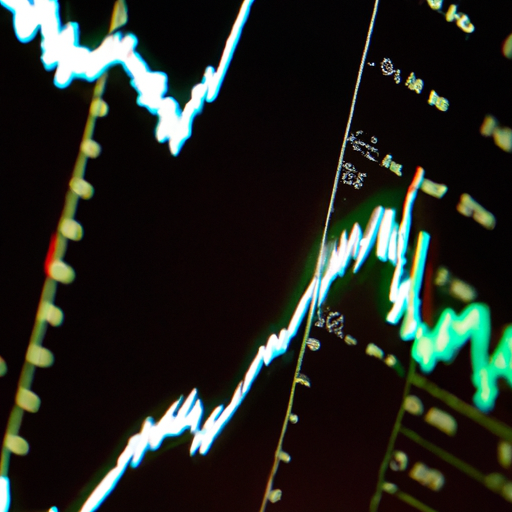
Well, let me tell you, there are quite a few! In this article, we’re going to dive into the world of trading and explore the various types you can get involved in. Whether you’re a beginner or a seasoned investor, understanding these different types will give you a better grasp of the financial markets and help you make informed decisions. So, are you ready to expand your trading knowledge? Let’s get started!
First up, we have stocks trading. This is probably the most well-known type of trading, and it involves buying and selling shares of publicly traded companies. You can trade stocks on exchanges like the New York Stock Exchange or the Nasdaq. It’s a popular choice for many investors because it offers the potential for long-term growth and dividends. But it’s important to remember that stock prices can be volatile, so it’s wise to do your research before jumping in.
Next on the list is forex trading, also known as foreign exchange trading. In this type of trading, you’re buying and selling currency pairs, such as the USD/EUR or GBP/JPY. The forex market is the largest and most liquid market in the world, with trillions of dollars being traded every day. It offers opportunities for investors to profit from fluctuations in exchange rates. However, forex trading can be risky, as market movements can be unpredictable. It’s important to have a solid understanding of the factors that influence currency prices before getting involved.
Lastly, let’s talk about cryptocurrency trading. This is a relatively new form of trading that involves buying and selling digital currencies, such as Bitcoin or Ethereum. Cryptocurrencies are decentralized and operate on a technology called blockchain. The crypto market is known for its volatility, with prices often experiencing significant fluctuations. While this volatility can offer opportunities for profit, it also carries higher risks. If you’re interested in cryptocurrency trading, it’s crucial to stay updated on market trends and developments.
So, there you have it – a brief overview of the different types of trading. In the following article, we’ll delve deeper into each type, exploring the strategies, risks, and potential rewards associated with them. Whether you’re interested in stocks, forex, or cryptocurrency trading, there’s a wealth of information to learn and explore. So, buckle up and get ready to expand your trading horizons! stock trading, forex trading, options trading, futures trading, cryptocurrency trading, commodities trading, bond trading, swing trading, algorithmic trading)? Trading encompasses a wide range of markets and strategies, each with its own unique characteristics and opportunities. Whether you’re a beginner looking to dip your toes into the world of trading or an experienced trader looking to expand your portfolio, understanding these different types of trading can help you make informed decisions and maximize your potential profits. In this article, we will explore the various types of trading and highlight their key features and strategies.
Stock Trading
Stock trading involves buying and selling shares of publicly traded companies. It is one of the most popular forms of trading and is accessible to individual investors through various platforms and brokerages. When you buy stocks, you become a partial owner of the company, and your profits depend on the company’s performance. Conversely, if the company’s value decreases, you may experience losses.
There are different approaches to stock trading, including day trading, swing trading, and long-term investing. Day trading involves buying and selling stocks within a single trading day, taking advantage of short-term price fluctuations. Swing trading focuses on capturing short to medium-term price movements, typically holding positions for a few days to weeks. Long-term investing, on the other hand, involves holding stocks for an extended period, with the goal of benefiting from the company’s growth over time.
Forex Trading
Forex trading, also known as foreign exchange trading, involves the buying and selling of currencies in the foreign exchange market. In forex trading, traders speculate on the price movements of currency pairs such as EUR/USD, GBP/JPY, and USD/JPY. Unlike stock trading, forex trading does not involve physical ownership of the currencies but rather trading based on exchange rate fluctuations.
Leverage and margin trading are common practices in forex, allowing traders to control larger positions with smaller amounts of capital. Leverage amplifies both potential profits and losses, so it’s crucial to use it responsibly and employ risk management strategies. Forex trading offers the opportunity to profit from both rising and falling markets, as traders can go long (buy) or short (sell) a currency pair.
Options Trading
Options trading involves trading contracts that give the holder the right to buy or sell an asset at a predetermined price within a specified period. These contracts, known as options, provide traders with flexibility and additional strategies to profit from price movements in various financial markets, including stocks, indices, and commodities.
When trading options, one can buy calls (options to buy) or puts (options to sell) to speculate on the future price movements of the underlying asset. Moreover, traders can also sell covered calls, a strategy where they simultaneously own the underlying asset and sell call options against it. Option trading requires an understanding of concepts like strike price, expiration date, and implied volatility, as these factors influence the value of options.
Futures Trading
Futures trading involves trading standardized contracts to buy or sell an asset at a future date and price. Popular futures markets include commodities (such as gold, oil, and wheat), indices (such as S&P 500 and Nasdaq), and currencies (such as the euro and the Japanese yen). Futures trading provides opportunities for both hedging and speculating on price movements.
Hedging in futures trading involves using futures contracts to offset potential losses in an underlying asset. For example, a farmer might sell futures contracts for their crop to lock in a price and protect against potential price declines. Speculators, on the other hand, aim to profit from price fluctuations by buying or selling futures contracts without intending to take delivery of the underlying asset.
Cryptocurrency Trading
Cryptocurrency trading involves buying and selling digital currencies like Bitcoin, Ethereum, and Litecoin. Cryptocurrencies operate on decentralized networks known as blockchain, and trading is conducted on cryptocurrency exchanges. The cryptocurrency market is known for its high volatility and 24/7 availability, offering traders constant opportunities for profit.
Similar to forex trading, cryptocurrency trading allows traders to go long or short on a particular cryptocurrency, depending on their market outlook. Due to the rapidly changing nature of the cryptocurrency market, traders often employ technical analysis and chart patterns to identify entry and exit points.
Commodities Trading
Commodities trading involves trading physical goods such as gold, oil, natural gas, wheat, and more. The prices of commodities are influenced by global supply and demand factors, making them susceptible to price fluctuations. Traders can take advantage of these fluctuations by buying low and selling high or vice versa.
Commodities trading offers a way to diversify one’s investment portfolio and hedge against inflation. For example, when inflation is expected to rise, investors often turn to commodities like gold as a store of value. Trading commodities requires staying up to date with the latest market news and understanding the fundamentals that impact pricing.
Bond Trading
Bond trading involves buying and selling fixed-income securities issued by governments, municipalities, or corporations. When you buy a bond, you are essentially lending money to the issuer in exchange for periodic interest payments. The income generated from bond investments comes from these interest payments.
Bond trading strategies can involve trading individual bonds or bond derivatives, such as bond futures or options. Traders can implement strategies like yield curve trading, which takes advantage of yield differentials across different maturities, or credit spread trading, where traders profit from changes in credit spreads between two bonds.
Swing Trading
Swing trading is a short-term trading strategy that aims to capture short to medium-term price movements. Swing traders typically hold their positions for a few days to weeks, profiting from price fluctuations within this timeframe. This trading style relies heavily on technical analysis and chart patterns.
Swing traders often look for price patterns, support and resistance levels, and other indicators to identify potential entry and exit points. The goal is to catch price swings during periods when the market is trending or experiencing short-term volatility. Swing trading requires discipline and risk management to maximize profits and minimize losses.
Algorithmic Trading
Algorithmic trading, also known as automated trading, involves using computer algorithms to execute trades based on pre-defined rules and strategies. Institutional traders and hedge funds commonly employ algorithmic trading, taking advantage of high-speed trading and data analysis.
Algorithms can analyze vast amounts of market data and execute trades with minimal human intervention. This approach aims to remove human emotions and biases from trading decisions, ensuring consistency and efficiency. Algorithmic trading strategies can range from simple rule-based systems to complex algorithms that adapt to market conditions in real-time.
Conclusion
Trading encompasses a wide variety of markets and strategies, each offering its unique opportunities and challenges. To succeed in trading, it’s essential to have a solid understanding of the chosen market, implement risk management techniques, and execute trades with discipline.
Whether you’re interested in stock trading, forex trading, options trading, futures trading, cryptocurrency trading, commodities trading, bond trading, swing trading, or algorithmic trading, continuous learning and staying updated with market trends and news are essential. Find the trading style that matches your goals, risk tolerance, and personality, and always remember that trading involves both potential profits and losses. With the right knowledge and skills, trading can be a rewarding journey towards financial independence.





